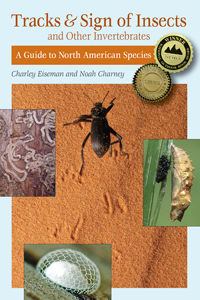As you have probably guessed, my lack of posts lately has been due not to my having run out of things to write about (I don’t think this could ever happen to someone who spends any time observing insects), but to my being too busy with fieldwork and taking care of my ever-growing menagerie of insects and spiders I’m trying to raise. I’ve just finished a weekend of leafminer surveys on Nantucket, and I found myself with a few minutes of spare time this evening to go through the ~500 photos I’ve just taken here. Since this is the last day of National Moth Week, I thought I’d share with you a few of the striking moths I’ve bumped into incidentally while wandering around and scouring leaves for evidence of tiny insects. I haven’t had a chance to look many of these up yet, so I don’t have much to say about them other than that they’re nice to look at.

This is some kind of clearwing moth (Sesiidae) that does a very good job of looking like some kind of vespid wasp. It seems to be something in the tribe Paranthrenini. [Edit, 11/4/2014: William H. Taft has identified this as Vitacea polistiformis, the grape root borer. Its name is obviously a reference to its resemblance to Polistes paper wasps.]

This one was perched on a leaf in a flooded ditch along a cranberry bog. Suspecting that it was one of the crambid moths with aquatic larvae, I just took a quick look at some of those and it looks like a good match for Elophila icciusalis, which has been given the common name of Pondside Pyralid (which is unfortunate, since it’s a crambid rather than a pyralid). I believe Elophila is one of the genera with larvae that make portable cases of leaf pieces, sort of like those of caddisfly larvae.

I saw two of these silvery, orange-bordered moths today in dry, grassy areas. I assume it’s one of the many grass-feeding crambids. [Added 7/28/14: I’m now thinking it’s Argyria nummulalis, which is indeed one of the grass-feeding crambids.]

This one is a pyralid, I think in the subfamily Phycitinae, and possibly a species of Acrobasis, of which the larvae live in cornucopias of their own poop. [Added 11/10/14: Well, I had the right tribe, but this is Dioryctria disclusa, the webbing coneworm moth. Larvae feed in developing pine cones.]

This is a slug caterpillar moth (Limacodidae), and appears to be the Spiny Oak-Slug Moth (Euclea delphinii). There was certainly plenty of oak around.
There were three rows of these flat, overlapping eggs on a single woolly bulrush (Scirpus cyperinus) leaf in a marsh. I think for the moment I won’t hazard a guess as to what type of moth they might belong to.
This is my new favorite thing. It is a small caterpillar that has aligned itself with the midrib of a scrub oak (Quercus ilicifolia) leaf and spun an intricate silken net over a section of the leaf, beneath which it has been eating little patches of leaf tissue to either side of the midrib. It has carefully decorated the strands of the net with tiny pellets of excrement. A few minutes after I picked this leaf, my mind suddenly flashed to a page in Dave Wagner’s field guide to eastern caterpillars. I believe this is a very young Melsheimer’s Sack-bearer Moth (Mimallonidae: Cicinnus melsheimeri), which later will construct a portable case of leaf pieces, in which it will overwinter before transforming into an adult moth. If I’m right, this is a state-listed Threatened species, which is at its northern range limit here. I’ll find out when I get home to my books tomorrow. In the meantime, here are some interesting photos of a sack-bearer my friend Eric LoPresti found in the Bahamas, which I believe is something in the same genus.
Edit: as noted in the comments below, I believe this is actually the more common scalloped sack-bearer (Lacosoma chiridota).






These are beautiful photos! It must be amazing to take a walk with you.
What has that apparent Ciccinus done? I’ve never actually really had them alive. I’d be most curious what it does (especially if you can get it to make a goofy overwintering shelter).
So far it’s just eating the leaf tissue under and adjacent to the net. I checked Wagner’s book, and the photo I was remembering is actually for scalloped sack-bearer (Lacosoma chiridota). However, for C. melsheimeri, he says “early instars feed beneath a silken net fortified with feculae,” so it seems like it could be either at this point. The mature caterpillars look very different, so hopefully I can keep it alive for a while if not rear it to an adult.
I’ve been doing this same thing for many years. Constantly hunting new things to rear. Today I had two weird Sawfly larvae I found on Elderberry, quit eating. A parasite emerged from one of them, went into the ground and (I hope) pupated. The other one looks right, meaning I don’t think it is parasited. It also went into the ground. We’ll see. Each morning it takes me until 9:00 to check all the rearing containers. I also maintain a collection of insects. I”m up to 120 drawers now.
Hope you get the Lacosoma chiridota reared to adult.
Pingback: More Fun with DNA Barcoding | BugTracks